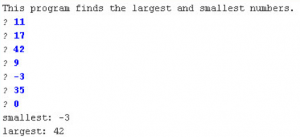Add a memo-function to store a number
Start my rearranging the buttons to make space for three new ones:

Create a variable to store the value:
float numberInMemory;
Initialize it:
- (void)viewDidLoad
{
...
numberInMemory = 0;
}
And connect the buttons to suitable methods:
- (IBAction)addMemoryButtonPressed:(UIButton *)sender {
numberInMemory += [self.numberTextField.text floatValue];
}
- (IBAction)subtractMemoryButtonPresed:(UIButton *)sender {
numberInMemory -= [self.numberTextField.text floatValue];
}
- (IBAction)getMemoryButtonPressed:(UIButton *)sender {
self.numberTextField.text = [NSString stringWithFormat:@"%@", [NSNumber numberWithFloat:numberInMemory]];
}
